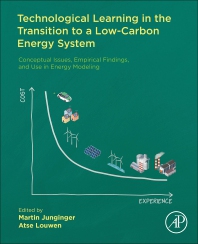In addition to the papers published regularly during the project, the results and findings of the REFLEX project are also published in book form.
| Link to Source |
Contents |
 |
Open Access Book Publication
How the Energy Transition in Europe Can Succeed
The Future European Energy System
Renewable Energy, Flexibility Options and Technological Progress
The REFLEX results and recommendations for action that will help decision-makers in politics to successfully implement the European Strategic Energy Technology Plan (SET-Plan) are summarized in this open-access book publication. This book analyses the transition toward a low-carbon energy system in Europe under the aspects of flexibility and technological progress. By covering the main energy sectors – including the industry, residential, tertiary and transport sector as well as the heating and electricity sector – the analysis assesses flexibility requirements in a cross-sectoral energy system with high shares of renewable energies. The contributing authors apply models and tools from various research fields, including techno-economic learning, fundamental energy system modelling, and environmental and social life cycle as well as health impact assessment, to develop an innovative and comprehensive energy models system (EMS). Moreover, the contributions examine renewable penetrations and their contributions to climate change mitigation, and the impacts of available technologies on the energy system.
|
 |
Book Publication
Technological Learning in the Transition to a Low-Carbon Energy System
Conceptual Issues, Empirical Findings, and Use in Energy Modeling
This book quantifies key trends and drivers of energy technologies deployed in the energy transition. It uses the experience curve tool to show how future cost reductions and cumulative deployment of these technologies may shape the future mix of the electricity, heat and transport sectors. The book explores experience curves in detail, including possible pitfalls, and demonstrates how to quantify the ‘quality’ of experience curves. It discusses how this tool is implemented in models and addresses methodological challenges and solutions. For each technology, current market trends, past cost reductions and underlying drivers, available experience curves, and future prospects are considered. Electricity, heat and transport sector models are explored in-depth to show how the future deployment of these technologies—and their associated costs—determine whether ambitious decarbonization climate targets can be reached – and at what costs. The book also addresses lessons and recommendations for policymakers, industry and academics, including key technologies requiring further policy support, and what scientific knowledge gaps remain for future research.
|